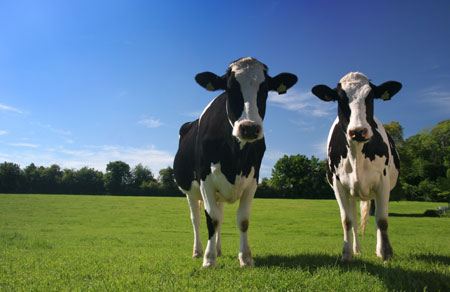First though, City environmental planner Brooke Marshal outlined the city’s draft Agricultural and Food Access Policy, prepared as part of the Official Community Plan process.
Marshall pointed out that several issues that led, in the early 1970s, to the creation of the ALR – a provincial land-use zone aimed primarily at protecting agricultural land – are coming around again. She listed skyrocketing fuel prices affecting both production and transportation, increased interest in local food production, rising global food prices and the impact on the food supply of land being converted from food production to growing crops for biofuel as issues bringing focus to the draft policy. Marshall said there is an agricultural policy in the city’s previous OCP and the intent of the current process isn’t to overhaul it completely but to add to it to bring the document up to date. She said key issues being addressed are encroachment of development upon agricultural land, ensuring that land taken out of the reserve locally will be replaced by land within the regional district and “be of comparable production quality,” facilitating local producers to be able to sell locally and giving people the ability to grow their own food through community gardens and other means.
Dan Passmore, senior planning technologist with the regional district, opened the meeting with a brief history of the Agricultural Land Commission and the Agricultural Land Reserve. He also gave an overview of agricultural initiatives in the regional district and in Spallumcheen. He’d been asked to talk about Spallumcheen as nobody representing that district had made themselves available to attend the meeting, probably a good call as many of the angry outbursts came from producers from that region. Passmore said the province was losing 4,000 to 6,000 hectares of prime agricultural land each year at the time the ALR was brought in. “B.C. has a very challenging geography,” he said, pointing out B.C. has more land mass than any province other than Quebec, but only 4.7 million hectares are included in the land reserve. That’s just five per cent of the province, only 1.1 per cent of which is prime agricultural land and only 2.7 per cent is suitable for a range of crops. Passmore said the ALC and ALR remained largely unchanged through the process that created them in spite of the fact the move was extremely controversial at the time. He said there have been a few changes over the years but, “the basic purpose of the act, to preserve B.C.’s agricultural land has been consistently maintained.”
“What happened to making sure farming is viable?” came the first shot from the audience, indicating controversy is another thing about the ALR that remains unchanged in roughly 35 years. The farmer asking the question reminded Passmore the act had at one time included provision for aid for struggling producers.
Passmore acknowledged the commission has shifted focus to a more regulatory role.
“So they just forgot about it,” the farmer suggested.
Another producer in the audience waded in with an angry denouncement of newly implemented meat processing regulations.
“They’ve shut down beef and poultry producers in this community.”
The same man also took great issue with the mandate of the ALC as laid out by Passmore.
“Not once did you mention save the farmer. If you save the farmer you will save the land. If you don’t save the farmer you might as well not have the land.”
Passmore made no effort to defend the meat regulations, agreeing the legislation has met with strong opposition. Indeed, the recent legislation came up repeatedly during the meeting, and the questioning in general grew so heated that at one point an audience member rose to suggest that it was degenerating into an unproductive attack on Passmore and Marshall who were simply representing their jurisdictions and were not policy makers.
The farmer who opened the Q&A responded with a suggestion of his own.
“If you can’t stand the heat get out of the kitchen.”
Marshall’s mention of community gardens provoked an angry response to the fact that the gardens would get irrigation at the agricultural rate of seven cents per cubic metre while farmers have to produce a certain dollar value from their land to qualify for that pricing or be left with irrigation bills calculated at ten times that rate.
Though the meeting, which was sponsored by the non-profit Sustainable Environment Network Society, was heavily dominated by cranky farmers bitter about the ALR, other audience members did manage to raise a few points. These included concerns about loss of green space in Vernon, discussion of grey water recycling systems, a suggestion that developers be compelled to provide community garden space and a suggestion that the City of Vernon have a policy of not accepting annexation requests for land parcels that are agriculturally viable if it is truly serious about preserving agricultural land.
(30)
By Dennis Stranack – May 27, 2008
Representatives of the regional district and the City of Vernon suffered the traditional fate of messengers at an information meeting about the Agricultural Land Reserve last Tuesday, which is to say they got themselves shot.
Shot down verbally, that is, as several frustrated farmers in an audience of about 40 at Vernon’s Schubert Centre dominated a question and answer period at the end of the meeting by venting their frustration with the land reserve.


